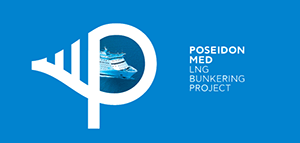
Description
Natural gas (NG) is a fossil fuel consisting mainly of methane. As a primary energy source, NG has been increasing its share in world energy consumption faster than any other source in the recent years (with the exception of coal, mainly because of its use in China) and it currently accounts for about 25% of world energy consumption.
Natural gas is traditionally transported from producing to consuming countries through pipelines. An alternative and direct way to transport natural gas is by sea, using the LNG technology.
LNG trade started in the 1960s. The LNG chain consisted of a liquefaction plant, a loading installation, a carrier vessel, an LNG terminal and a receiving LNG terminal with storage tanks and regasification installation that supplied a transmission grid with gas.
New uses of LNG emerged in the ‘70s, implying the LNG leaving the terminal in liquid form and not as gas. These developed rapidly in the ‘00s with the first applications of the use of LNG as marine fuel. These new uses, described by the term “small scale LNG”, involve:
The loading of LNG at the terminal, in liquid form, to either a ship or a truck.
The sea or road transportation of LNG.
The delivery to a small (compared with the LNG terminal) storage facility either onshore (i.e. at a plant, a hotel, a mall, a group of houses) or offshore (i.e. a vessel’s tank to be used as marine fuel).
Small Scale LNG concerns mainly two types of activities: LNG bunkering for the supply of ships using LNG as marine fuel and Road transportation to onshore users, which have LNG tank trucks in common, in the case of the supply of ships by truck.
Characteristics
LNG is a mixture of hydrocarbons, predominately methane (80 – 95%). Other significant components include other alkanes –ethane, propane and butane. Nitrogen may also be present at levels up to 1%. All the more complex hydrocarbons, along with carbon dioxide and sulphur compounds, are removed to trace level.
It is created by cooling natural gas to -162°C (liquefaction process): During this process, the natural gas, which is primarily methane, is cooled below its boiling point, whereby certain concentrations of hydrocarbons, water, carbon dioxide, oxygen, and some sulphur compounds, are either reduced or removed.
The reduction in the volume of NG by 600 times, when liquefied, allows its transport as LNG, as it takes significantly less space than natural gas (600 cubic meters of Natural Gas = 1 Cubic meter of LNG).
Odourless, colourless, non-toxic non-corrosive liquid. If spilled, it will disappear quickly without corroding the surface. Has cryogenic properties. If spilled on the ground, it will become colder. If mixed with water, it will not be absorbed to the water, nor will it pollute it.
Natural gas burns cleaner than other fossil fuels. The primary products of the NG flame are heat carbon dioxide and water. It has a high ignition temperature of 628°C (Propane= 493°C, Butane= 405°C, Kerosene= 295°C, Gasoline=246°C) and burns like a candle than a blaze. This makes LNG more difficult to ignite than other fuels we use for transport. LNG itself is not burned, only natural gas vapours will burn and only with an ignition source of 628°C. Natural gas also needs to have a concentration of 5-15% in air on oxygen to burn. When cold LNG comes in contact with warmer air, it creates a visible vapour cloud from condensed moisture in the air. As it continues to get warmer, the vapour cloud becomes lighter than air and rises. When the vapour mixes with air, it is only flammable when the mixture is between 5-15 percent natural gas. When the mixture is less than 5 percent natural gas, it doesn't burn. When the mixture is more than 15 percent natural gas in air, there is not enough oxygen for it to burn.
LNG vapour is non explosive in an unconfined environment and LNG (the liquid) is not flammable or explosive.
Transportation takes place in double-hulled ships specifically designed to handle the low temperature of LNG. These carriers are insulated to limit the amount of LNG that evaporates.
A majority of the world's supply comes from countries with the largest natural gas reserves: Algeria, Australia, Brunei, Indonesia, Libya, Malaysia, Nigeria, Oman, Qatar, Trinidad, and Tobago.

The sole responsibility for the content of this webpage lies with the authors. It does not represent the opinion of the European Communities. The European Commission is not responsible for any use that may be made of the information contained therein.
Website Privacy Policy





